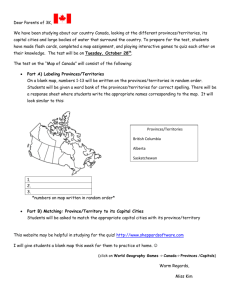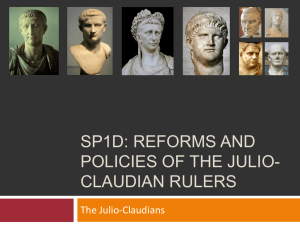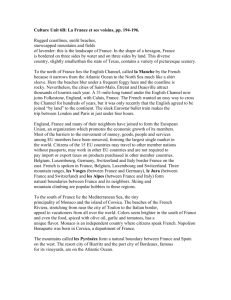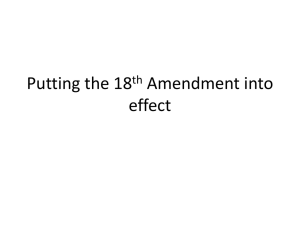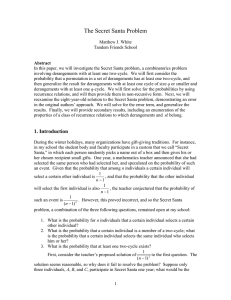Let's get deranged!
advertisement
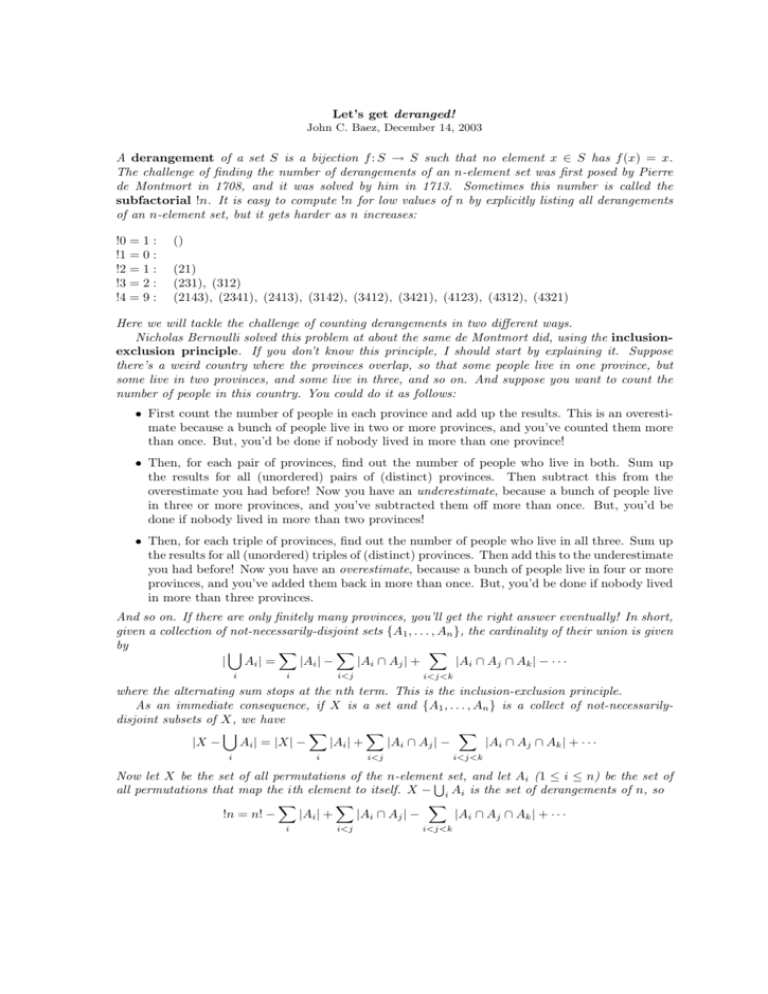
Let’s get deranged!
John C. Baez, December 14, 2003
A derangement of a set S is a bijection f : S → S such that no element x ∈ S has f (x) = x.
The challenge of finding the number of derangements of an n-element set was first posed by Pierre
de Montmort in 1708, and it was solved by him in 1713. Sometimes this number is called the
subfactorial !n. It is easy to compute !n for low values of n by explicitly listing all derangements
of an n-element set, but it gets harder as n increases:
!0 = 1 :
!1 = 0 :
!2 = 1 :
!3 = 2 :
!4 = 9 :
()
(21)
(231), (312)
(2143), (2341), (2413), (3142), (3412), (3421), (4123), (4312), (4321)
Here we will tackle the challenge of counting derangements in two different ways.
Nicholas Bernoulli solved this problem at about the same de Montmort did, using the inclusionexclusion principle. If you don’t know this principle, I should start by explaining it. Suppose
there’s a weird country where the provinces overlap, so that some people live in one province, but
some live in two provinces, and some live in three, and so on. And suppose you want to count the
number of people in this country. You could do it as follows:
• First count the number of people in each province and add up the results. This is an overestimate because a bunch of people live in two or more provinces, and you’ve counted them more
than once. But, you’d be done if nobody lived in more than one province!
• Then, for each pair of provinces, find out the number of people who live in both. Sum up
the results for all (unordered) pairs of (distinct) provinces. Then subtract this from the
overestimate you had before! Now you have an underestimate, because a bunch of people live
in three or more provinces, and you’ve subtracted them off more than once. But, you’d be
done if nobody lived in more than two provinces!
• Then, for each triple of provinces, find out the number of people who live in all three. Sum up
the results for all (unordered) triples of (distinct) provinces. Then add this to the underestimate
you had before! Now you have an overestimate, because a bunch of people live in four or more
provinces, and you’ve added them back in more than once. But, you’d be done if nobody lived
in more than three provinces.
And so on. If there are only finitely many provinces, you’ll get the right answer eventually! In short,
given a collection of not-necessarily-disjoint sets {A1 , . . . , An }, the cardinality of their union is given
by
[
X
X
X
| Ai | =
|Ai | −
|Ai ∩ Aj | +
|Ai ∩ Aj ∩ Ak | − · · ·
i
i
i<j
i<j<k
where the alternating sum stops at the nth term. This is the inclusion-exclusion principle.
As an immediate consequence, if X is a set and {A1 , . . . , An } is a collect of not-necessarilydisjoint subsets of X, we have
[
X
X
X
|X − Ai | = |X| −
|Ai | +
|Ai ∩ Aj | −
|Ai ∩ Aj ∩ Ak | + · · ·
i
i
i<j
i<j<k
Now let X be the set of all permutations of the n-element
S set, and let Ai (1 ≤ i ≤ n) be the set of
all permutations that map the ith element to itself. X − i Ai is the set of derangements of n, so
X
X
X
!n = n! −
|Ai | +
|Ai ∩ Aj | −
|Ai ∩ Aj ∩ Ak | + · · ·
i
i<j
i<j<k
1. Prove that
!n = n! −
n
n
n
(n − 1)! +
(n − 2)! − · · · + (−1)n
(n − n)!
1
2
n
2. Prove that
!n = n!
1
1
1
(−1)n
− + − ··· +
0! 1! 2!
n!
3. At the banquet of a large conference, n mathematicians hang their coats on the coat rack as
they enter. At the end of the night they leave in a drunken stupor, each one randomly putting on
a coat without checking that it’s their own. Show that in the limit as n → ∞, the probability that
none of the mathematicians staggers home in their own coat approaches 1/e. Moral: if you see a
mathematician wearing an ill-fitting coat, there’s a good chance he’s deranged.
4. Show that if n > 0 then !n is the integer closest to n!/e.
Now let’s count derangements another way, using generating functions:
5. Let D be the structure type such that a D-structure on the finite set S is a derangement of S.
Let P be the structure type such that a P -structure on S is a permutation of S. Recall that the
structure type E Z , whose generating function is ez , is the structure of ‘being a finite set’. Construct
an isomorphism
P ∼
= E Z D.
Hint: show that any permutation f : S → S gives a way to chop S into two subsets: one on which f
is quite dull, the other on which f acts as a derangement.
6. Using part 5, show that
|D|(z) =
e−z
.
1−z
7. Using part 6, show that
(1 − z)
d
|D|(z) = |D|(z) − e−z .
dz
8. Since the number of derangements of the n-element set is !n, we have
|D|(z) =
∞
X
!n n
z
n!
n=0
Using this and part 7, show that
!(n + 1) = (n + 1) !n + (−1)n+1
This recurrence is the subfactorial analogue of the more famous
(n + 1)! = (n + 1) n!
9. To convince yourself that this stuff is really cool, calculate !n for 1 ≤ n ≤ 6 using both the
formula in part 4 and the recurrence in part 8.


